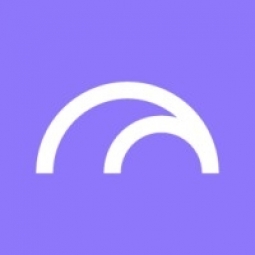公司规模
SME
地区
- America
国家
- United States
产品
- Auvik
技术栈
- SNMP
实施规模
- Enterprise-wide Deployment
影响指标
- Productivity Improvements
- Customer Satisfaction
技术
- 网络与连接 - 网络管理和分析软件
适用行业
- Professional Service
适用功能
- 商业运营
用例
- 远程资产管理
- 根因分析与诊断
服务
- 系统集成
关于客户
ITque is a full-service outsourced IT company that has been serving small and mid-sized businesses in Silicon Valley since 2011. The company has five technicians, including DJ Forman, the co-founder and CTO. ITque serves about 90 clients, with approximately 80% of the work being in managed services and the rest in project work. The company's goal for 2016 was to achieve 65% revenue growth by creating streamlined processes and repeatable outcomes in all aspects of the business.
挑战
ITque, a full-service outsourced IT company, was facing the challenge of managing its growing client base without increasing the number of technicians. The company aimed to achieve 65% revenue growth in 2016 by creating streamlined processes and repeatable outcomes. However, the biggest challenge was triaging support issues, funnelling them to the appropriate level of troubleshooting in the fastest amount of time, then solving the issues quickly. Traditional customer complaints about network slowness were particularly challenging to address.
解决方案
To address the challenge, ITque implemented Auvik, a network management tool. Auvik helped ITque in quickly identifying and resolving network issues, thereby improving the efficiency of their technicians. The tool provided detailed and technical insights, yet was intuitive enough to visualize very specific information and troubleshoot complicated routing issues quickly. In one instance, Auvik helped ITque identify that a client's issue was not network-based as initially thought, but was due to a rogue anti-virus agent installed on the client’s servers. This insight saved the client months of unsuccessful troubleshooting.
运营影响
数量效益

Case Study missing?
Start adding your own!
Register with your work email and create a new case study profile for your business.
相关案例.
Case Study
SET Creative Ditches Google Vault for Datto Backupify
When Kienholz first started at SET, the staff was using Microsoft Outlook for email with no form of data backup. It became apparent that something needed to change as the staff was often burdened with trying to recover emails from departed employees. Kienholz transitioned the team to Google’s Gmail and implemented Google Vault for backup purposes. While SET employees quickly adjusted to Gmail, which many use for personal email, the same could not be said for Google Vault. “Unlike most Google products, Vault was not user friendly at all. It’s very hard to search for items. We never really figured out how to do a restore either,” explained Kienholz. Due to SET’s work with high-profile brands, projects often go through many rounds of revisions right down to the eleventh hour. This means that every bit of information - especially data living in project managers’ emails - is crucial to delivering clients a polished design at deadline.
Case Study
Infosys achieves a 5–7 percent effort reduction across projects
Infosys, a global leader in consulting, technology, and outsourcing solutions, was facing significant challenges in application development and maintenance due to its distributed teams, changing business priorities and the need to stay in alignment with customer needs. The company used a mix of open source, home-grown and third-party applications to support application development projects. However, challenges resulting from distributed teams using manual processes increased as the company grew. It became more and more important for Infosys to execute its projects efficiently, so they could improve quality, reduce defects and minimize delays.
Case Study
Arctic Wolf Envelops Teamworks with 24x7 Cybersecurity Protection and Comprehensive Visibility
Teamworks, a leading athlete engagement platform, faced rising cyberthreats and needed enhanced visibility into its network, servers, and laptops. With software developers connecting from all over the world, the company sought to improve its security posture and position itself for future growth. The company had a secure platform but recognized the need for a more proactive solution to identify gaps within its technology infrastructure. Data exfiltration and malicious access were top concerns, prompting the need for a comprehensive security upgrade.
Case Study
Sawback IT and Datto Save Client From a Costly Mistake
Ballistic Echo, a software development house, faced a critical challenge when human error led to the deletion of thousands of lines of unique code. This incident occurred before the code was pushed to source control, resulting in significant loss of time, revenue, and work. The previous file-level backup solution they used was slow and inefficient, making it nearly impossible to manually recreate the lost work. The need for a more reliable and efficient business continuity solution became evident to avoid such disasters in the future.
Case Study
Opal Helps Customers Shine Thanks to Datto
SP Flooring & Design Center faced a ransomware attack that encrypted and locked their files. The attack was initiated through a compromised service account set up by an outside vendor. The ransomware infection was isolated quickly, but there was a concern about the extent of the data at risk. The company had backups in place but was unsure of how much information was compromised. The situation required immediate action to prevent further damage and restore the affected data.
Case Study
Pipeline Insight Case Study: YARCDATA
YarcData faced challenges in determining the conversion rates of prospects into customers through various marketing efforts and identifying the source of its leads. They wanted to know the percentage of opportunities in the sales pipeline that came from different marketing events, web downloads, or self-sourced sales opportunities. Additionally, they needed the ability to drill down into the data to guide where to allocate more marketing dollars based on the success of previous efforts. Previously, YarcData relied heavily on spreadsheets and Salesforce.com reports, which made it difficult to extract the exact information they needed. This reliance on spreadsheets represented about 70% of their data presentation.







